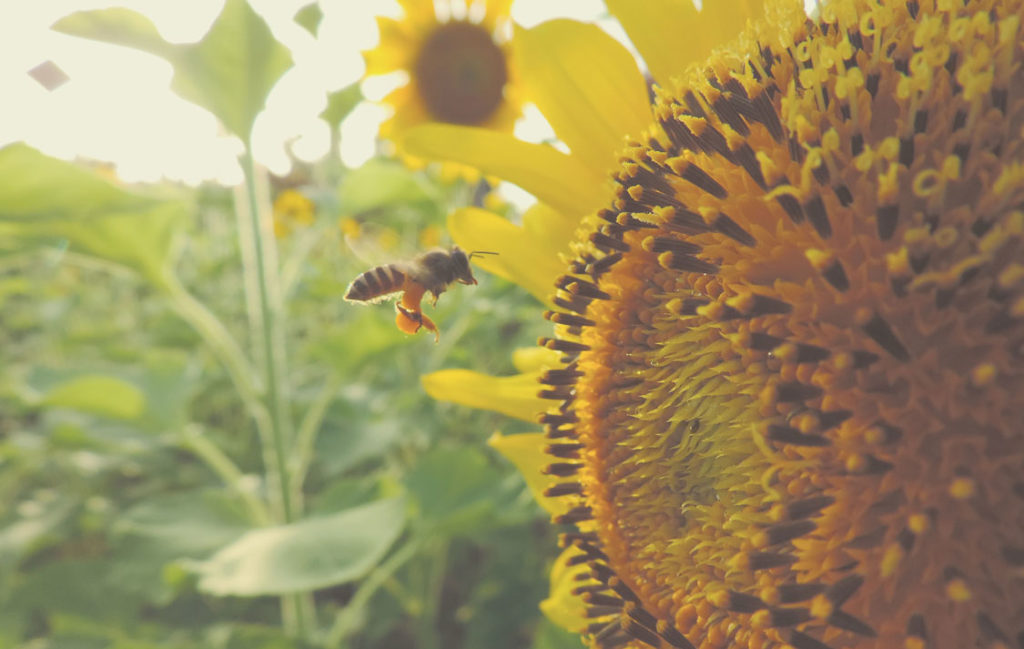Pop a few seeds in a sunny patch and you’ll soon have a host of glorious sunflowers nodding their heads in the breeze
RELATED TO GROWING SUNFLOWERS: Growing daisies
Sunflowers (Helianthus spp.) are native to the Americas where indigenous tribes have been dining on them for centuries, but it’s only recently that we’ve cottoned onto their use as an ornamental plant. Breeders have been quick to respond and there’s now a wonderful array of cultivars available. Not only is growing sunflowers easier than you think, they offer quick results and have the dual reward of striking flowers and edible parts.

START BY SOWING SUNFLOWER SEED
Choose any sunny spot and sow your sunflower seed in situ. They’ll grow in pretty much any soil type but appreciate a well-worked bed and a generous helping of compost.
KEEP READING: How to make compost
Some varieties can be sown in May, but it’s best to start once any danger of frost has passed. It’s important to water the seeds regularly and keep the bed weed free. Depending on the variety, sunflowers will develop seeds in 80–120 days. Sow a fresh batch every 2–3 weeks to enjoy continuous blooms until the first frost.
YOU MIGHT LIKE: 5 Frost-tolerant plants

CARE, MAINTENANCE AND CONTROLLING PESTS
- For record blooms, feed the plants with a liquid fertiliser every 2–3 weeks.
- A rather large root system helps sunflowers withstand periods of drought, but the flowers may take a bit of a knock. Water them regularly before and after flowering as deep, regular watering helps encourage root growth, which is especially helpful with taller sunflower varieties as they bear top-heavy blooms.
- A thick layer of mulch is beneficial in hot dry weather and will keep weeds at bay.
- If you live in an area prone to high winds or are growing very tall varieties, it’s a good idea to stake your plants.
- Pests and diseases rarely trouble sunflowers, but they are sometimes infected with fungal diseases like mildew and rust. Downy mildew is most likely to occur on cool damp nights and warm humid days; it won’t kill mature plants, it just mars their appearance. Protect the seedlings from slugs, snails and birds.
ON THE MENU
Most people know that sunflower seeds are delicious, but what isn’t as well known is that almost the entire sunflower plant is edible.
KEEP READING: How to use edible flowers
American Indians had multiple uses for sunflowers; along with cooking them, they used them to make medicines, dyes and body paints.
You can eat sunflower sprouts straight from the ground, atop salads or in a stir-fry. Use the pliable, tender stalks of young plants – which taste similar to celery – to add a crunchy texture to salads. The flower buds have a similar flavour to artichokes; steam or boil them in water for a few minutes and them serve them with butter. Use the petals in a salad. Peel young sunflower stalks and cut them into bite-sized snacks or toss into salads. The seeds are rich in vitamins, proteins and minerals as well as linoleic acid, which helps the body to metabolise fats.
HOW TO DRY OUT SUNFLOWER SEEDS
You’ll know it’s time to harvest sunflower seeds when the flower heads turn downward. The back of the flower head will be brown and dry, most of the yellow petals will have dried and fallen, the seeds will be plump and the seed coats will be black and white striped.
To get to the seeds before the birds do, cut off the flower heads with about 30cm of stem attached and hang them in a warm, dry place. Keep them away from humidity to prevent mould and let them cure for several weeks. When the seeds have thoroughly dried, dislodge them by rubbing two flower heads together or by brushing them with your fingers or a stiff brush. Allow the seeds to dry for a few more days, then store them in airtight glass jars.
MORE ABOUT GROWING SUNFLOWERS: Sunflower basics (Farmer’s Weekly)

